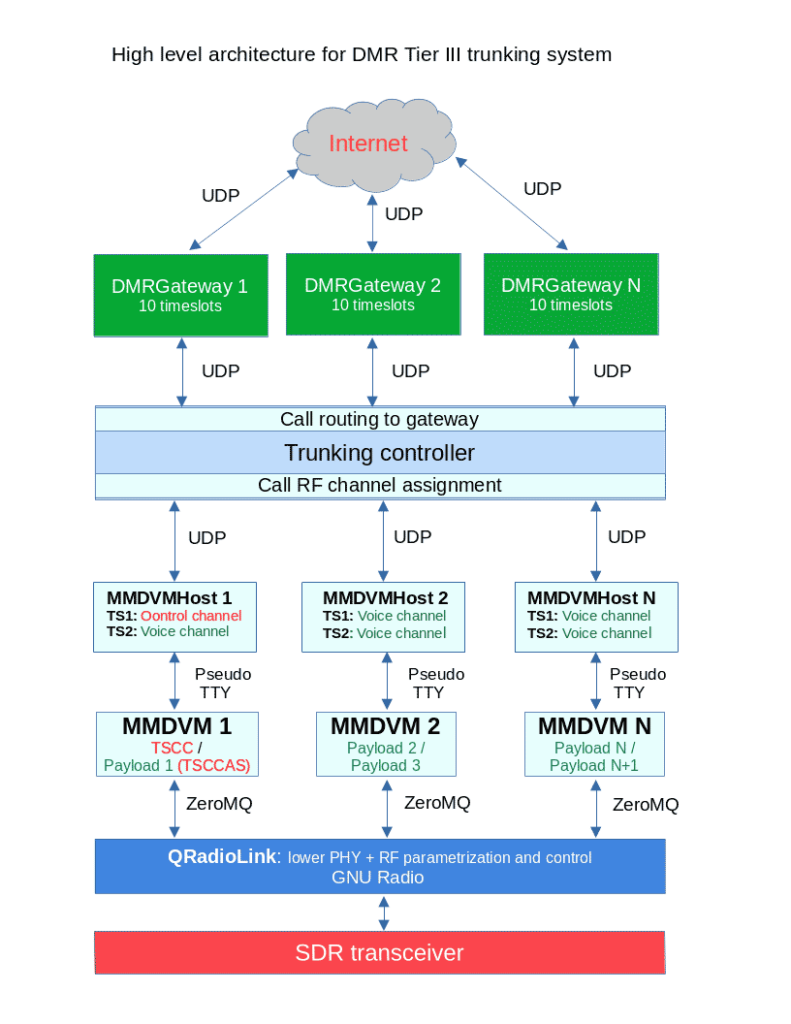Thank you to Adrian Musceac (author of QRadioLink) for submitting his article about how he implemented an amateur radio DMR Tier III Trunked Radio Base Station with a LimeNet-Micro software-defined radio. DMR Tier III is a digital voice trunked radio system that employs Time Division Multiple Access (TDMA) technology. Tier III is largely based on Tier II, but adds trunking abilities which enable efficient channel access and resource allocation.
The LimeNET Micro is a software defined radio based on the LimeSDR, but it has some upgraded specifications such as an embedded Raspberry Pi Compute Module 3+ that make it easier to deploy as a base station.
Adrian writes:
The Tier III extension (trunked radio) to the DMR standard is defined and specified by the European Telecommunications Standards Insititute (ETSI) in the TS 102 361-4 document.
The project uses LimeNet-Micro, LimeSDR-mini or Ettus USRP hardware to set up such a base station for experimental and amateur radio digital voice communications purposes. The core components of this project are MMDVM, MMDVMHost (both under the form of forks supporting communication via ZeroMQ and pseudo-TTY), GNU Radio, DMRGateway, QRadioLink and the DMR trunked radio controller GUI.
Since DMR trunked radio is not very well known and used in the amateur radio world, I hope this will bring some new information to amateurs interested in these digital voice communication technologies. All code used is available as free and open source software (FOSS). A demo of the project used with real world amateur radio communications can be found on the page.

